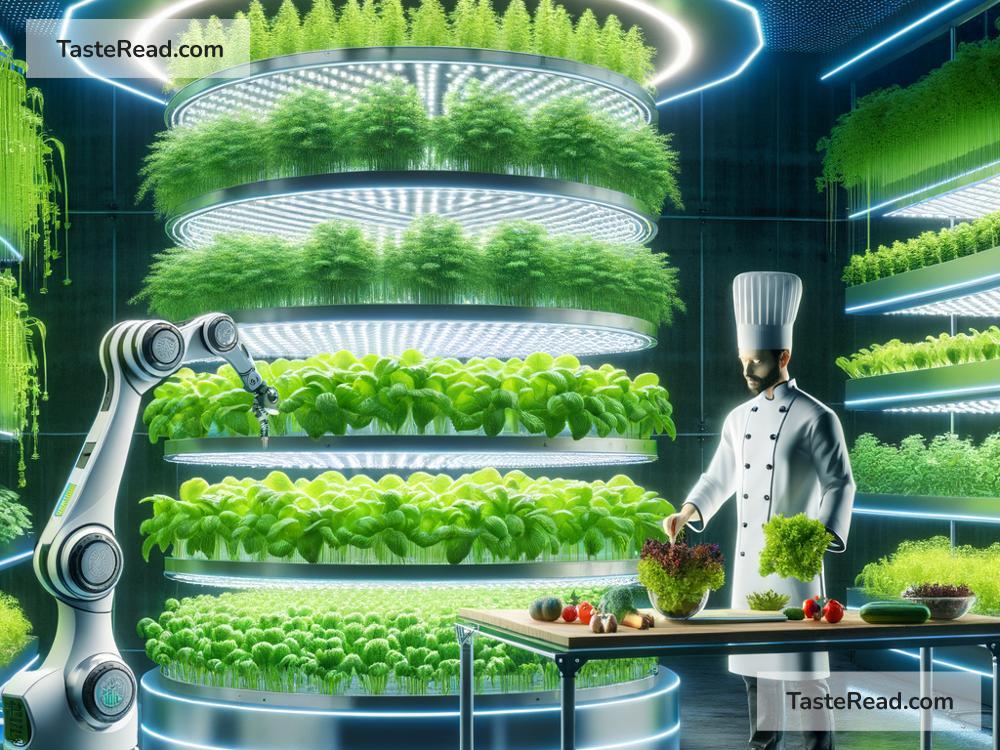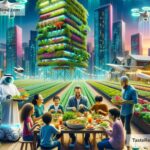The Future of Food and the Role of Transformative Leadership
The world is changing rapidly, and one of the biggest challenges we face is how to feed everyone in the years to come. By 2050, the global population is expected to grow to nearly 10 billion people. With climate change, limited natural resources, and rising food demand, the future of food is a serious issue. But there’s also a reason to be optimistic. Advances in technology, innovative farming methods, and transformative leadership can help us create a sustainable and equitable food system for future generations.
In this blog, we’ll explore the future of food and how transformative leadership can guide us toward solutions. This article is meant for everyone—not just experts—so we’ll keep the language simple and easy to understand.
The Challenges With Food Today
Before we look ahead, let’s understand the problems with food right now. Many people don’t have enough food to eat, while others waste a lot of it. About 800 million people worldwide go hungry every day, and one-third of all food produced globally ends up in the trash. At the same time, farming is affecting our planet. Agriculture uses 70% of the world’s fresh water and is responsible for about 30% of greenhouse gas emissions. This impacts the environment and makes farming harder as the climate continues to change.
On top of that, food systems are not always fair. Farmers often struggle to make a living, and nutritious food is not accessible to everyone. There’s a growing demand for better solutions that address these problems while ensuring everyone has enough nutritious food to live a healthy life.
How Technology is Changing Food
One exciting aspect of the future of food is technology. Scientists, farmers, and engineers are working together to create innovative solutions. Let’s look at some of the ways technology is helping:
-
Vertical Farming: Vertical farming allows crops to grow inside buildings, where they don’t rely on the weather or seasons. Using LED lights and controlled environments, food can be produced year-round. Plus, it takes less water and land, making it more environmentally friendly.
-
Lab-Grown Meat: Lab-grown or cultured meat doesn’t come from animals. It’s made from cells grown in labs. This process uses fewer resources and doesn’t harm animals, which could revolutionize how we eat protein.
-
Precision Agriculture: Farmers are using drones, sensors, and AI to monitor crops and soil. This helps them use fewer pesticides and fertilizers, saving money and reducing harm to the environment.
-
Alternative Proteins: Plant-based meat replacements and protein made from insects are becoming popular. They offer nutrition without using as many resources as animal farming.
-
Blockchain for Food Transparency: Blockchain technology can track food from farm to table, making it easier to ensure safety, reduce waste, and improve fairness in the supply chain.
Transformative Leadership: Leading the Way in the Food Revolution
Even with incredible technology and ideas, change doesn’t happen by itself. It needs leaders—people who inspire and guide others toward a better future. Transformative leadership in the food industry can make all the difference. Here’s how:
-
Vision for the Future: Transformative leaders don’t just focus on profits today; they think about long-term solutions and the well-being of future generations. They dream big and set clear goals to revolutionize the way food is produced and consumed.
-
Empowering Others: Great leaders don’t work alone. They bring together scientists, farmers, policymakers, businesses, and communities to build partnerships. Everyone has something valuable to contribute to the future of food.
-
Championing Sustainability: A transformative leader prioritizes sustainability in every decision. They push for farming methods, products, and technologies that won’t harm the planet or make resources run out.
-
Listening to Voices: Good leaders listen to everyone—from rural farmers struggling on the ground to urban consumers worried about health or affordability. By understanding challenges at all levels, they can create solutions that work for everyone.
-
Taking Action, Not Waiting for Others: Transformative leaders don’t wait for someone else to step in. When they see problems, they act. Their courage inspires others and builds momentum for change.
What Can We Do as Everyday People?
You may not be running a large food company or leading a farming revolution, but we all have a part to play in shaping the future of food. Here are some simple steps:
- Support Sustainable and Local Farming: Buying food from local farms reduces transportation emissions and supports communities.
- Reduce Food Waste: Be conscious about buying, storing, and using food so less of it goes to waste.
- Try Alternative Proteins: Explore plant-based or insect-based foods to reduce the strain on global resources.
- Educate Yourself and Others: Learning about food systems helps you make informed choices and spread awareness.
Conclusion: Hopeful Leaders, Happier Futures
The future of food is both a challenge and an opportunity. Technology and innovation are paving the way for amazing solutions, but we won’t succeed without transformative leadership to guide us. Leaders who care about sustainability, fairness, and collaboration can make sure the global food system works for both people and the planet.
Even if you’re not a scientist or politician, you can make a difference by making small changes in your daily habits. Together, we can build a future where food is healthy, affordable, and sustainable for everyone. The journey may be hard, but it’s worth it—for us and for the generations ahead.


